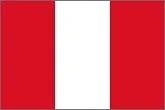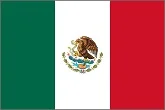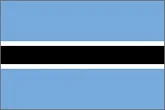World Competitiveness Ranking | place |
List
Visualization
Source:
International Institute for Management Development


International Institute for Management Development
https://www.imd.org
https://www.imd.org
?
The IMD World Competitiveness Yearbook (WCY), first published in 1989, is a comprehensive annual report and worldwide reference point on the competitiveness of countries. It provides benchmarking and trends, as well as statistics and survey data based on extensive research. It analyzes and ranks countries according to how they manage their competencies to achieve long-term value creation. An economy’s competitiveness cannot be reduced only to GDP and productivity because enterprises also have to cope with political, social and cultural dimensions. Governments therefore need to provide an environment characterized by efficient infrastructures, institutions, and policies that encourage sustainable value creation by enterprises.
The IMD World Competitiveness Ranking emphasizes a long-term trend highlighted in past editions – that the countries on the top of the list each have a unique approach to becoming competitive.
The Yearbook provides extensive coverage of 64 economies, chosen based on the availability of comparable international statistics and our collaboration with local Partner Institutes, which contribute to the collection of survey data and ensure that all data are reliable, accurate and as up-to-date as possible.
The World Competitiveness Ranking is based on 336 competitiveness criteria selected as a result of comprehensive research using economic literature, international, national, and regional sources, and feedback from the business community, government agencies, and academics. The criteria are revised and updated regularly as new theories, research, and data become available and as the global economy evolves.
Average: 32,5 place
Countries: 64
?
The IMD World Competitiveness Yearbook (WCY), first published in 1989, is a comprehensive annual report and worldwide reference point on the competitiveness of countries. It provides benchmarking and trends, as well as statistics and survey data based on extensive research. It analyzes and ranks countries according to how they manage their competencies to achieve long-term value creation. An economy’s competitiveness cannot be reduced only to GDP and productivity because enterprises also have to cope with political, social and cultural dimensions. Governments therefore need to provide an environment characterized by efficient infrastructures, institutions, and policies that encourage sustainable value creation by enterprises.
The IMD World Competitiveness Ranking emphasizes a long-term trend highlighted in past editions – that the countries on the top of the list each have a unique approach to becoming competitive.
The Yearbook provides extensive coverage of 64 economies, chosen based on the availability of comparable international statistics and our collaboration with local Partner Institutes, which contribute to the collection of survey data and ensure that all data are reliable, accurate and as up-to-date as possible.
The World Competitiveness Ranking is based on 336 competitiveness criteria selected as a result of comprehensive research using economic literature, international, national, and regional sources, and feedback from the business community, government agencies, and academics. The criteria are revised and updated regularly as new theories, research, and data become available and as the global economy evolves.
Basic data
Change
from
to
Flag
place
Column
Map
Racechart


































































